Best time to travel to Thailand

Thailand is a fascinating country that welcomes everyone for any adventure. While the country is famous for its year-long tropical sunshine, it also experiences a wet season and sweltering temperatures. That means that, like everywhere else, choosing the best time to visit Thailand is vital to make the best out of your trip.
So, which months are best for an unforgettable trip to the Land of Smiles? Whether you want the most comfortable weather to relax by the beach or hope to avoid the crowds, this month-by-month guide should help you plan your trip.
Seasons in Thailand
Thailand generally experiences three seasons: hot, cool, and wet. However, the season can vary slightly depending on which area of the country you’re in. Central Thailand, such as Bangkok and Ayutthaya, experiences the hot season from April to June, while the wet season runs between July and October. The cool season makes up the remaining months from November to February.
Northern Thailand, such as Chiang Mai and Chiang Rai, experiences the cool season from October to February, the hot season from March to May, and the wet season between June and October.
There are several seasonal variations in the southern part of Thailand, which depends on the specific coast you’re on. Moreover, there are generally only two seasons in the south of Thailand. The Andaman coast is dry from November to March. On the other hand, the dry season on the Gulf coast starts in January and ends in November.
No matter which area you’re planning to go to, the cool and dry seasons are generally the best times to visit Thailand. You can explore the country as much as you want since the weather is mostly sunny with only a little rain. That said, you can still enjoy many activities during the wet season as the rain doesn’t typically fall all day long.

Below is a general overview of Thailand’s weather based on the travel season.
High season: November to March
Thailand’s high season runs from November to March. During this time, the weather is cool and hot in most parts of the country, meaning you can enjoy comfortable weather. However, great weather also means that the country is at its busiest, especially around Christmas, New Years, and Chinese New Years.
Not just that, the crowds also bring inflated rates – flights, hotels, and excursions are usually more expensive. In addition, hotels typically have stricter deposit, cancellation, and stay policies around these 5 months. Therefore, if you’re planning to visit Thailand during the peak season between November and March, it’s best to plan and book early in advance, so visit our partner’s website ‘Agoda‘
Shoulder season: April to June and September to October
There are two shoulder season periods in Thailand, from April to June and September to October. During these months, the monsoon is either leaving or just settling in. April to June is typically the most sweltering time in the country, with an average temperature of 30ºC in Bangkok.
The coastal areas, however, benefit from the sea breezes to make the heat somewhat bearable. These months are also the dry season on the gulf coast, making it the best time to head to the islands in the Gulf of Thailand. It’s the ideal time to go surfing or diving on the Andaman sea as well. Therefore, the shoulder season is a great time to head to the coast. Additionally, prices are usually lower, and most attractions are less crowded.
Are you planning to travel to Thailand in September or October, find out the best hotel deals on Agoda now to save money and time!
Low season: July to October
The wet season in Thailand is the low season for tourism in the country. During the wet season, expect to experience afternoon showers almost every day and even major flooding sometimes. The good news is that the rain is usually short, so you can still enjoy plenty of suns. Naturally, the higher rainfall means that Thailand is less crowded and prices are lower.
This allows you to enjoy a more leisurely vacation because the tourist attractions and beaches are virtually empty. Keep in mind, however, that some islands are closed, and boat service is limited during stormy weather. In addition, you may not be able to go diving, surfing, and do other water activities when the weather is unsafe. Therefore, if you choose to travel to Thailand during the low season, you need to be flexible with your travel plans.
When is the best time to go
North Thailand
The best time to visit Northern Thailand, particularly cities like Chiang Mai and Pai, is during the cool and dry season from November to February. This period offers pleasant temperatures ranging from 15°C to 25°C (59°F to 77°F), making it ideal for outdoor activities such as trekking and exploring the region’s stunning landscapes and cultural sites. The vibrant festivals during this time, such as Yi Peng and Loy Krathong in November, enhance the travel experience with beautiful lantern displays and traditional ceremonies.
March to May can be quite hot, with temperatures often exceeding 35°C (95°F), and the air quality can be poor due to agricultural burning. The rainy season from June to October brings heavy rainfall, especially in August and September, which can disrupt travel plans but also results in lush green scenery.
Central Thailand
For Central Thailand, including Bangkok, the optimal time to visit is from November to February. This period is covered by cooler temperatures and lower humidity, making it more comfortable for sightseeing and outdoor activities. December is particularly busy due to the influx of international tourists during the holiday season, leading to higher prices and crowded attractions.
However, the festive atmosphere, including events like the King’s Birthday and New Year’s celebrations, can be quite enjoyable. The shoulder months of February and March are also favorable, offering slightly warmer weather and fewer crowds. The hot season from April to June can be extremely uncomfortable, with temperatures soaring above 35°C (95°F), while the rainy season from July to October can bring heavy downpours, especially in September.
Northeast Thailand
Northeast Thailand, known for its unique culture and rural landscapes, is best visited from November to February. During this time, temperatures are cooler, ranging from 20°C to 30°C (68°F to 86°F), making it suitable for exploring the region’s national parks and historical sites. The annual Bun Bang Fai (Rocket Festival) in May is a highlight for visitors, showcasing local traditions and festivities.
The hot season from March to May can be quite oppressive, with temperatures often exceeding 40°C (104°F). The rainy season from June to October can also be challenging due to heavy rains, particularly in August and September, but it can also be a time to witness the lush landscapes and vibrant flora.
Eastern Thailand
Eastern Thailand, especially the Gulf of Thailand, is best visited from April to September when the weather is warm and dry, perfect for beach activities. April features the vibrant Songkran Festival with festive water fights. From May to July, sunny days and occasional rain showers make it ideal for avoiding crowds, while August offers favourable beach conditions.
Although September is the rainiest month, it attracts travellers seeking lower prices and fewer tourists. This region combines cultural festivals with beautiful coastal scenery, making it a great destination during these months.
Southern Thailand
Southern Thailand, which includes popular beach destinations like Phuket and Krabi, has two distinct seasons: the dry season from November to April and the rainy season from May to October. The best time to visit is during the dry season when the weather is sunny and dry, with temperatures averaging between 25°C and 32°C (77°F to 90°F).
This is also the peak tourist season, particularly around Christmas and New Year’s, when prices can be at their highest. The rainy season can bring heavy showers, particularly in September and October, but it also offers lower prices and fewer crowds. Some areas, like the Gulf Coast (Koh Samui), experience a different pattern, with the best time to visit being from January to August, avoiding the heaviest rains in October and November.
Weather in Thailand by Month
Below, we outlined the weather in Thailand month-by-month, as well as what to expect each month of the year to make the best out of your trip!
| Destination | Jan | Feb | Mar | Apr | May | Jun | Jul | Aug | Sep | Oct | Nov | Dec |
|---|---|---|---|---|---|---|---|---|---|---|---|---|
| Ayutthaya | 32°C 5mm | 34°C 22mm | 36°C 35mm | 36°C 85mm | 35°C 157mm | 34°C 184mm | 33°C 180mm | 32°C 185mm | 32°C 282mm | 32°C 169mm | 31°C 43mm | 31°C 5mm |
| Bangkok | 32°C 8mm | 33°C 23mm | 34°C 25mm | 35°C 69mm | 35°C 190mm | 34°C 154mm | 33°C 163mm | 32°C 197mm | 32°C 327mm | 32°C 239mm | 31°C 52mm | 31°C 8mm |
| Koh Samet | 33°C 16mm | 33°C 52mm | 33°C 57mm | 34°C 100mm | 33°C 210mm | 32°C 199mm | 32°C 205mm | 32°C 192mm | 31°C 271mm | 32°C 240mm | 32°C 77mm | 32°C 10mm |
| Khao Lak | 31°C 36mm | 33°C 38mm | 33°C 76mm | 33°C 183mm | 32°C 383mm | 31°C 460mm | 30°C 469mm | 30°C 446mm | 30°C 563mm | 30°C 361mm | 30°C 171mm | 30°C 58mm |
| Koh Samui | 29°C 189mm | 31°C 52mm | 33°C 67mm | 34°C 62mm | 33°C 176mm | 33°C 128mm | 32°C 109mm | 32°C 119mm | 31°C 272mm | 31°C 467mm | 29°C 252mm | 29°C 230mm |
| Krabi | 31°C 31mm | 33°C 30mm | 34°C 59mm | 34°C 142mm | 32°C 256mm | 32°C 221mm | 32°C 231mm | 32°C 264mm | 31°C 264mm | 31°C 209mm | 30°C 81mm | 30°C 46mm |
| Phuket | 31°C 40mm | 32°C 28mm | 33°C 63mm | 33°C 143mm | 31°C 322mm | 31°C 292mm | 31°C 272mm | 31°C 381mm | 30°C 335mm | 30°C 186mm | 31°C 65mm | 31°C 30mm |
| Udon Thani | 29°C 6mm | 31°C 20mm | 34°C 41mm | 35°C 81mm | 33°C 229mm | 32°C 264mm | 31°C 250mm | 31°C 303mm | 31°C 278mm | 31°C 82mm | 30°C 10mm | 29°C 3mm |
| Chiang Mai | 28°C 8mm | 31°C 7mm | 34°C 14mm | 35°C 47mm | 33°C 150mm | 31°C 100mm | 30°C 141mm | 30°C 167mm | 30°C 197mm | 29°C 148mm | 29°C 36mm | 28°C 15mm |
January
With cool and dry weather, January is the peak tourist season. The southern beaches on both coasts are sunny, perfect for those who want to relax and sunbathe at the beach. The central and northern areas enjoy cooler temperatures, allowing you to go sightseeing or jungle trekking without having to deal with uncomfortable heat. Chiang Mai is usually the coldest during this season. The evenings are usually chillier, so make sure to bring a light sweater or jacket.
If you have time, make sure to visit Bo Sang, a small village in the north around a 21-minute drive away from Chiang Mai. The village holds the annual Umbrella Festival every third weekend of January. During the festival, the village blossoms with beautiful umbrellas in all shapes and sizes.
It’s packed with cultural performances, parades, live music, and plenty of food. January is also the perfect time to visit Sam Phan Bok in Ubon Ratchathani. Sometimes called “the Grand Canyon of Thailand,” this natural wonder can only be seen in all its glory in the dry season when the river is not overflowing with water. Therefore, in January, you’ll be able to see everything from cavernous chambers to tiny burrows.
Thailand events in January
- Umbrella Festival (Bo Sang): Experience a vibrant display of umbrellas, cultural performances, parades, and live music in a charming village near Chiang Mai.
- Chinese New Year Festival: Celebrate with festive activities, including dragon dances and traditional performances, typically held in late January or early February in areas with significant Chinese communities.
- Sam Phan Bok (Ubon Ratchathani): Visit the “Grand Canyon of Thailand” to see this natural wonder at its best during the dry season.

February
February offers almost the same weather conditions as January and therefore it is still one of the peak periods for tourist activities in Thailand. Nonetheless, it is usually much quieter than January itself. The southern parts of Thailand also benefit from good weather with plenty of sunshine and little rainfall which means that you can easily spend many fun filled sunny days at the beach.
The time of Chinese New Year nearly always comes around February. If you wish to be part of the festivities, the best place to go is central Bangkok during the Chinese New Year when the area is very busy with the Chinese community. There are also opportunities for acrobatic shows, performances of dragon and lion dances or even of Chinese Opera.
February is also a time that is marked by Chiang Mai’s flower festival and other similar festive occasions. Every year, flower lovers visit the festival to see as much the most beautiful flowers, as orchids, chrysanthemums or Ratchaphruek, which are grown throughout the country. The festival is enjoyable and very peaceful, so attending it can be done by all ages. Other than you seeing beautiful flower arrangements and decorative plants, you will also enjoy a parade, bands, and cultural dance during the 3 day festival. Also you can also savour tasty foods sold in the streets.
Another highlight of February in Thailand is Makha Bucha Day, a Buddhist celebration and Thai national holiday that usually falls in February. To gain insight into Makha Bucha Day in Thailand, visit a local temple to observe spiritual rituals, where people pray, chant, and make merit. One of the most popular places to observe the holiday is Wat Saket in Bangkok. You can also attend the Makha Bucha Fair in Prachinburi to see cultural demonstrations, processions, and a lantern release.
Thailand events in February
- Chinese New Year (February): Celebrate with dragon dances, acrobatic demonstrations, and more in areas with significant Chinese populations, like Chinatown in Bangkok.
- Chiang Mai Flower Festival: Enjoy vibrant floral displays, parades, and traditional dances in one of Thailand’s most colorful events.
- Makha Bucha Day: Visit temples like Wat Saket in Bangkok to witness spiritual rituals or attend the Makha Bucha Fair in Prachinburi for cultural processions and a lantern release.
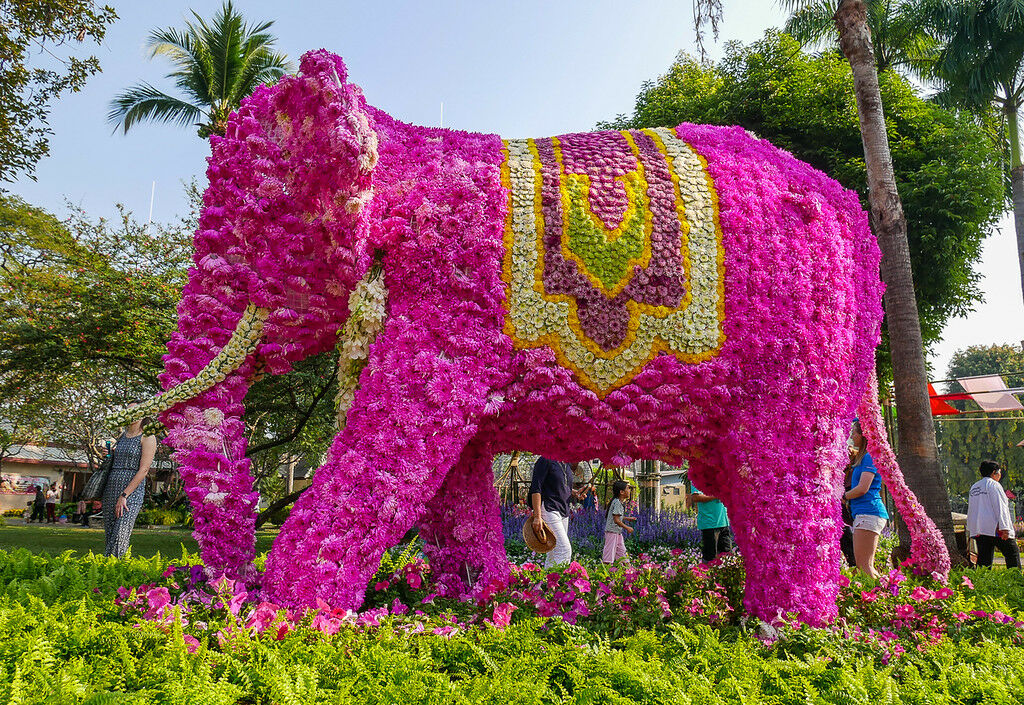
March
March marks the beginning of Thailand’s hot and dry season, with temperatures climbing rapidly. This transition period, known as the shoulder season, sees tourist crowds starting to thin, particularly on the beaches and islands. Although the rising heat can become slightly uncomfortable, it presents an excellent opportunity for water activities.
During this time, snorkelling and scuba diving conditions are ideal, especially on the Andaman coast, like the pristine Similan Islands. The sea’s clarity during March enhances visibility, allowing divers to fully appreciate the vibrant and diverse marine life.
For adventure enthusiasts, the month also offers thrilling activities. You can explore the deep caverns of Lam Khlong Ngu National Park in Kanchanaburi, where cave exploration offers a unique blend of excitement and natural beauty.
Nature lovers visiting Thailand in March should consider attending the Turtle Release Festival in Phang Nga. This event offers a unique experience to engage with conservation efforts and witness the release of turtles back into their natural habitat, making it a memorable part of any trip to Thailand.
Thailand events in March:
- Turtle Release Festival (Phang Nga): Participate in conservation efforts and witness the release of turtles back into the sea, a unique and memorable experience for nature enthusiasts.

April
April is one of the hottest months in Thailand, and the heat can sometimes feel unbearable due to the high humidity. To stay comfortable, it’s recommended to stay in air-conditioned accommodation. Don’t forget to wear sunscreen and drink plenty of water to stay hydrated. On the bright side, April is a great time for water activities like surfing or diving in the Andaman Sea.
While tourist crowds may thin out during this time, it’s still essential to make reservations in advance as the entire country celebrates Songkran, also known as the Water Festival. Songkran marks the start of the Thai New Year and is celebrated with massive water fights from 13 to 15 April. Some areas extend the festivities for a whole week. If you’re visiting Thailand in April, Bangkok, Chiang Mai, and Phuket are some of the best places to experience this exciting festival.
Additionally, April is the time for Poy Sang Long, a traditional ceremony where young boys are ordained as monks. This unique cultural event provides a glimpse into the religious life of Thailand.
Thailand events in April
- Songkran Water Festival (13 to 15 April): Celebrate the Thai New Year with water fights across the country.
- Poy Sang Long Ceremony: A cultural tradition where young boys are ordained as monks.

May
May remains a hot month in Thailand, though it can be slightly cooler compared to April. As the wet season approaches, humidity levels rise noticeably. Despite many sunny days, crowds tend to be thinner, and prices are lower, making May a good time to visit if you can handle the heat.
In early May, Thailand hosts the Royal Ploughing Ceremony, a traditional ritual marking the start of the rice planting season aimed at ensuring a good harvest. Another important event that may fall in May or June is Visakha Bucha Day, one of the most significant Buddhist holidays. This day commemorates the birth, enlightenment, and death of the Lord Buddha. Many people visit temples across the country to make merit. The Temple of the Emerald Buddha in Bangkok and Doi Suthep Temple in Chiang Mai are excellent places to witness these traditions.
May is also filled with other lively festivals. One of the most popular is the Bun Bang Fai Festival in Yashaton, where locals launch colourful rockets into the sky in hopes of bringing plentiful rains and a prosperous harvest. The festival is accompanied by vibrant parades, traditional dances, performances, and live music, offering an excellent opportunity to experience Thai culture.
Thailand events in May
- Royal Ploughing Ceremony: Celebrates the start of the rice planting season.
- Visakha Bucha Day: A major Buddhist holiday commemorating the birth, enlightenment, and death of the Buddha.
- Bun Bang Fai Festival: A lively event in Yashaton with rocket launches, parades, and cultural performances to encourage rain for a good harvest.

June
Most parts of Thailand start to experience the wet season in June. Therefore, it’s best always to carry an umbrella wherever you go and wear shoes that won’t slip. When riding a scooter, make sure to take extra precautions as the roads can be slippery and dangerous.
June is normally the time to enjoy a true jazz experience by the beach in Hua Hin Jazz Festival. However, like many other festivals, the jazz festival has to be postponed due to the pandemic. Other festivals that take place in June during normal circumstances include Phi Ta Khon, Pattaya International Music Festival, and Chanthaburi Fruit Festival.
Thailand events in June
- Hua Hin Jazz Festival: Enjoy jazz performances by the beach in Hua Hin (postponed due to pandemic).
- Phi Ta Khon Festival: A vibrant and spooky ghost festival.
- Pattaya International Music Festival: A popular music event in Pattaya.
- Chanthaburi Fruit Festival: Celebrate the region’s bounty of tropical fruits.
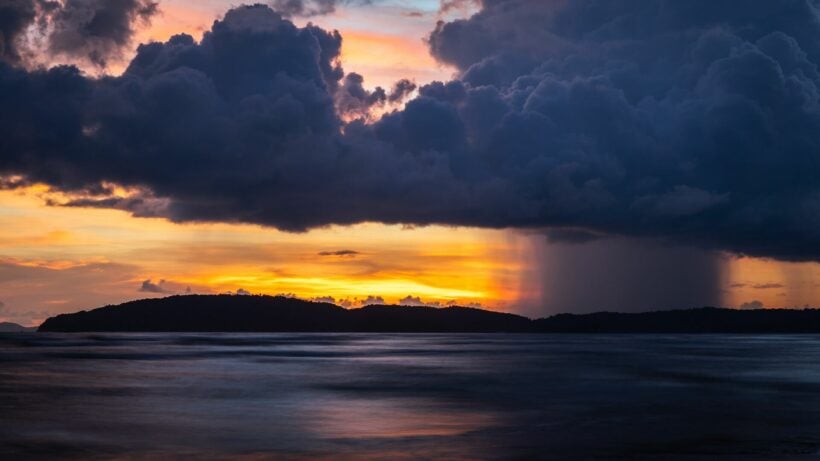
July
July brings heavier rain than June, with the west coast generally receiving more showers than the east. The humidity remains high, though temperatures may drop slightly. This month is ideal for visiting national parks as the rains transform the landscape into lush, green scenery. Waterfalls, often dry during other months, are also full and beautiful, making them a must-see during this time.
For those looking to escape the rain, head to Koh Samui, Hua Hin, Koh Phangan, or Cha-Am. These regions tend to be the driest, offering plenty of opportunities to relax on the beach. You can also go snorkelling or diving in the Gulf of Thailand, where the underwater world is particularly stunning in July. Diving around Koh Tao is especially breathtaking during this month.
In July, Thailand also celebrates HM the King’s Birthday, which is a national holiday. Asahina Bucha, another significant Buddhist holiday, typically falls in the middle or towards the end of the month. This holiday marks the Lord Buddha’s first sermon, and religious ceremonies are held in temples nationwide. In some provinces, such as Saraburi, large religious parades are organized. During this time, alcohol sales are often restricted.
Also, you can experience the Candle Festival, which coincides with Asahina Bucha. The most famous version is the Ubon Ratchathani Candle Festival in Isan, featuring parades of intricate wax sculptures, traditional dances, and lively music. This festival is an excellent way to immerse yourself in northeastern Thai culture.
Thailand events in July
- HM the King’s Birthday: A national holiday in Thailand.
- Asahina Bucha Day: Marks the Buddha’s first sermon, with ceremonies in temples and parades in certain provinces.
- Ubon Ratchathani Candle Festival: A vibrant festival featuring grand wax sculptures, traditional dances, and music in northeastern Thailand.

August
August is typically the wettest month in most parts of Thailand, with the northern and western regions receiving the highest rainfall. In contrast, the east coast remains relatively dry and sunny. Humidity levels stay high, so it’s wise to carry mosquito repellent wherever you go.
If you’re visiting Thailand in August, there are plenty of indoor activities to enjoy. These include exploring museums, temples, art galleries, and shopping malls. If you happen to be in Phuket during this month, you may witness the Por Tor Hungry Ghost Festival, a significant merit-making event for the island’s Chinese community. The Queen’s Birthday is celebrated nationwide as Mother’s Day in Thailand, a day filled with lights, flowers, decorations, and fireworks.
Thailand events in August
- Por Tor Hungry Ghost Festival: A merit-making event for the Chinese community in Phuket.
- Queen’s Birthday (Mother’s Day): A national celebration with lights, flowers, and fireworks.
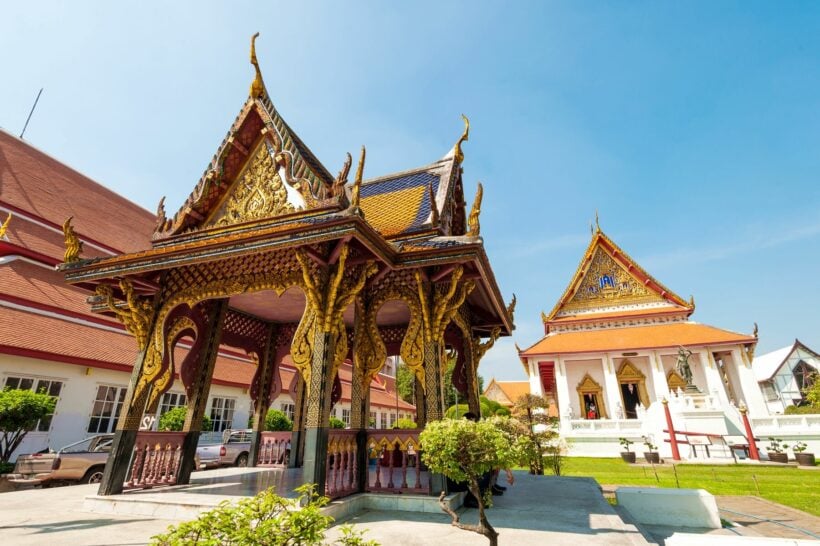
September
The rainy season typically continues through September, particularly along the Andaman coast. However, there is a silver lining to the rain—accommodation prices are often much cheaper, and there are fewer tourists. This makes September an excellent time to visit Thailand if you’re travelling on a budget.
While it can rain almost every day, there are plenty of indoor attractions to enjoy throughout the country. Additionally, the waterfalls and rivers are at their fullest in September, and the landscape is vibrant and lush with green foliage. The beaches can be hit or miss during this time, but if you’re fortunate enough to catch some sunshine, you’ll have the beaches mostly to yourself, without the usual crowds.
Thailand events in September
- Waterfalls and rivers at their fullest: Ideal time to visit waterfalls and enjoy Thailand’s lush landscapes.
- Less crowded beaches: Enjoy fewer tourists if you catch some sunny days on the beach.
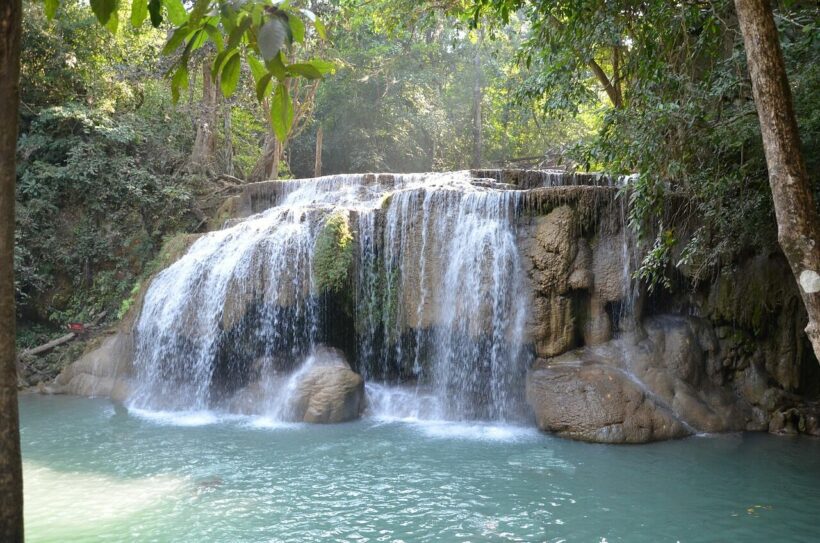
October
October can still be quite wet in many parts of Thailand, though both the rainfall and humidity levels start to decrease. The south remains hot and humid, while the north begins to experience cooler weather.
On 13 October, Thailand commemorates the passing of the beloved former King Bhumibol, while on 23 October, the country honours King Chulalongkorn by placing flowers and garlands on his memorials.
One of the most unique events in October is the Vegetarian Festival in Phuket, which takes place between late September and mid-October. This festival celebrates the 9 Taoist Emperor Gods and involves abstaining from meat, fish, alcohol, and drugs to cleanse the body and spirit. It’s a great time for vegans and vegetarians to enjoy a wide variety of vegetarian dishes from street vendors. The festival is also known for its extreme rituals, with participants performing acts such as walking on nails, piercing their cheeks with swords, and climbing knife-laden ladders. While fascinating, these rituals may be disturbing for some visitors, so it’s not recommended for the faint-hearted.
Thailand events in October
- 13 October: Commemoration of the passing of King Bhumibol.
- 23 October: King Chulalongkorn Day, with flower offerings at his memorials.
- Vegetarian Festival (late September to mid-October): A Taoist celebration with vegetarian food, along with extreme and gory rituals in Phuket.
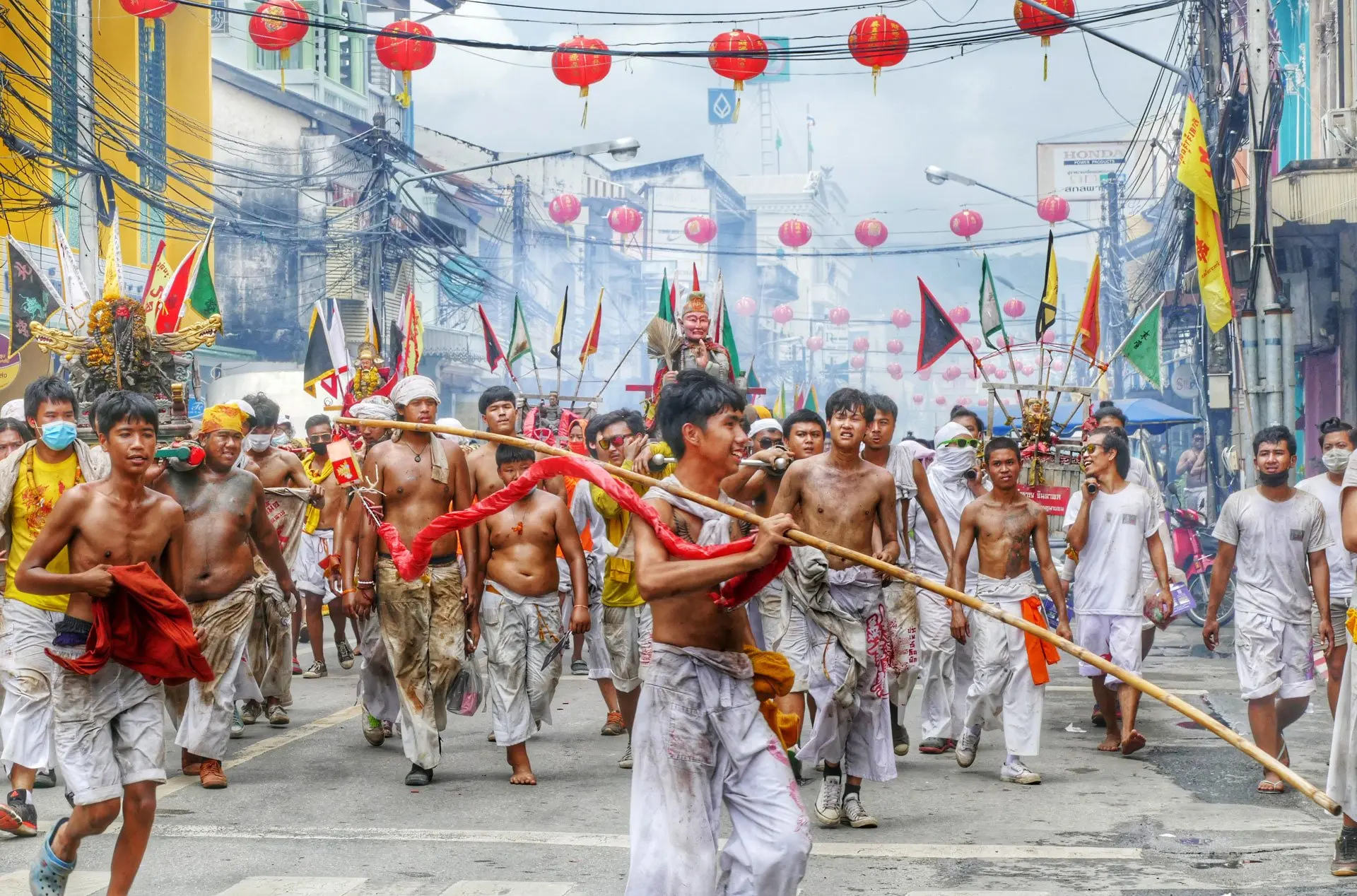
November
November ushers in the cool and dry season to most parts of Thailand, making it one of the best months to visit. Tourists begin to arrive in abundance, drawn by the plentiful sunshine and moderate temperatures. The Andaman coast is particularly inviting, perfect for unwinding and soaking up the sun on the beach. However, it remains the wettest month on the eastern islands such as Koh Phangan and Koh Samui.
The most enchanting festival in Thailand, the Loy Krathong Festival, takes place in November. During this celebration, people float beautiful candlelit boats made of banana leaves, known as krathongs, on rivers and waterways to honour the water spirits. The Loy Krathong Festival coincides with the Yee Peng Lantern Festival in Chiang Mai. Instead of releasing boats into the river, participants launch thousands of paper lanterns with candles into the sky during the Yee Peng Festival. Another notable event in November is the Lopburi Monkey Festival, dedicated to monkeys. During this festival, tables laden with salads, fruits, and other foods are set up for the monkeys to enjoy.
Thailand events in November
- Loy Krathong Festival: Float candlelit banana leaf boats (krathongs) on rivers to honour water spirits.
- Yee Peng Lantern Festival: In Chiang Mai, launch thousands of paper lanterns with candles into the sky.
- Lopburi Monkey Festival: Dedicated to monkeys, featuring tables of salads, fruits, and other foods for the monkeys.

December
December marks the peak of tourist season in Thailand, thanks to sunny, pleasant weather and minimal rainfall. In northern regions, temperatures can drop, so packing a light sweater is advisable. The country is bustling with tourists seeking to escape winter.
December also features national holidays and festivals. On December 5th, Thailand observes King Bhumibol’s birthday, which is also Father’s Day.
While Christmas is not widely celebrated, New Year’s festivities are significant. Tourist spots transform into vibrant party venues with musical events, galas, and shows.
Thailand events in December
- King Bhumibol’s Birthday/Father’s Day (5 December): A national holiday to honour the late King Bhumibol, widely revered across Thailand.
- New Year’s Eve Celebrations (31 December): Major tourist spots host lively parties, music events, and firework displays to ring in the new year.
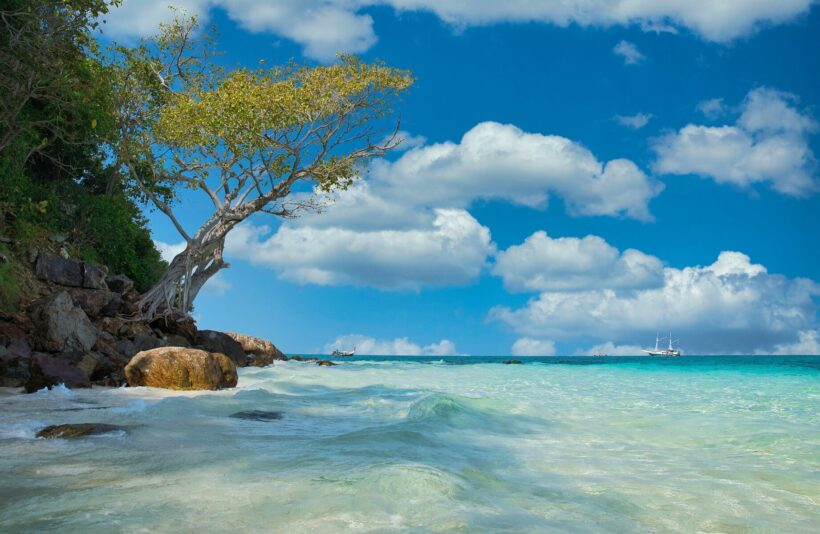
We hope that this guide can help you plan your next trip to the Land of Smiles. As of today, travelling to Thailand might still be difficult, though not impossible. So keep this article for future reference when travelling is safe again. Until then, make sure to stay safe!
Latest Thailand News
Follow The Thaiger on Google News:


























